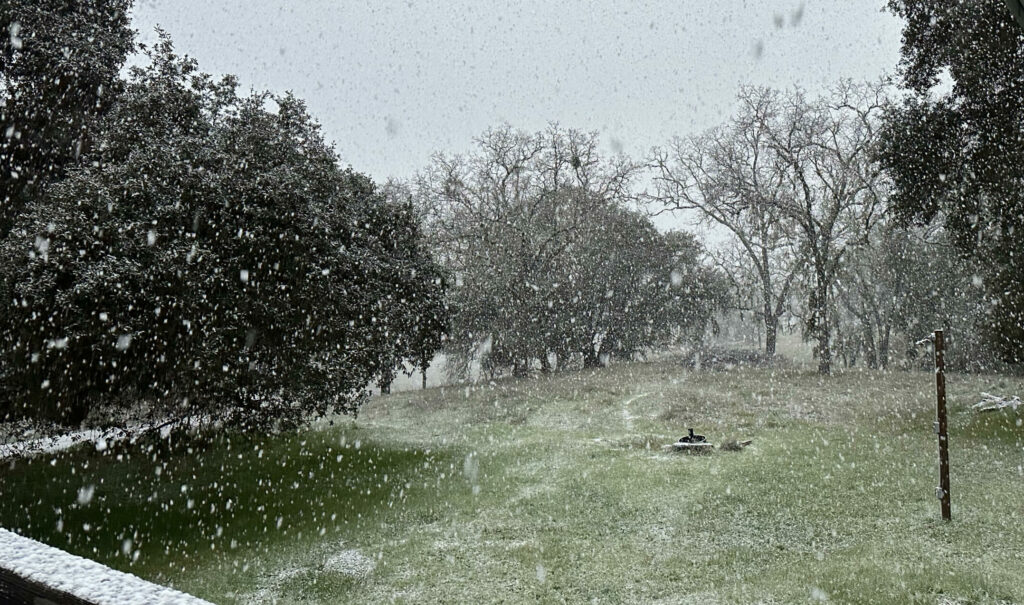How much rain has fallen on SLO County? Here are the latest totals
March 1, 2023

Snow falling in rural Santa Margarita
By KAREN VELIE
Rain, snow and heavy winds pounded San Luis Obispo County over the past five days with some areas of the county recording highest precipitation totals in decades.
For the next four days, local residents will have an opportunity to dry out before the next storm arrives on Sunday. With a stormy March in the forecast, here are the latest totals from SLO County.
Climate scientists track rain from July 1 through June 31.
Rainfall totals from July 1 through March 1, along with average yearly rainfall:
Arroyo Grande – 24.33 inches to date – average 14.09 inches
Atascadero – 22.85 inches to date – average 12.06 inches
Lopez Dam – 34.47 inches to date – average 18.48 inches
Los Osos – 26.66 inches to date – average 15.77 inches
Nipomo – 26.57 inches to date – average 12.62 inches
Oceano – 20.40 inches to date – average 12.26 inches
Rocky Butte – 69.26 inches to date – average 34.75 inches
San Luis Obispo – 27.70 inches to date – average 16.82 inches
San Simeon – 23.01 inches to date – average 15.12 inches
Santa Margarita – 35.80 inches to date – average 16.96 inches
Shandon – 16.14 inches to date – average 8.44 inches
Templeton – 25.52 inches to date – average 13.05 inches






The comments below represent the opinion of the writer and do not represent the views or policies of CalCoastNews.com. Please address the Policies, events and arguments, not the person. Constructive debate is good; mockery, taunting, and name calling is not. Comment Guidelines